Superfund Sites in Reuse in South Carolina
If you are having trouble viewing the map in your browser, click the 'View larger map' link below
Atlantic Phosphate Works
The 30-acre Atlantic Phosphate Works Superfund site is located in Charleston, South Carolina. Phosphate fertilizer manufacturing took place at the site from 1900 until 1943. Manufacturing operators produced sulfuric acid. Lead-insulated chambers held the acid. In the late 1990’s, investigators determined that site activities contaminated groundwater, soil and sediment with lead and arsenic. While ExxonMobil never owned or operated facilities at the site, the company accepted responsibility for site cleanup by way of a corporate merger in 1999. EPA’s 2004 cleanup removed, treated and capped contaminated soil and treated groundwater. Groundwater monitoring is ongoing. South Carolina Electric & Gas (SCE&G) currently operates the 100-megawatt Hagood Steam Plant at the site. The plant provides energy during periods of high electricity demand and storm emergencies. In 2008, SCE&G installed two new gas turbines at the plant.
For more information:
Calhoun Park Area
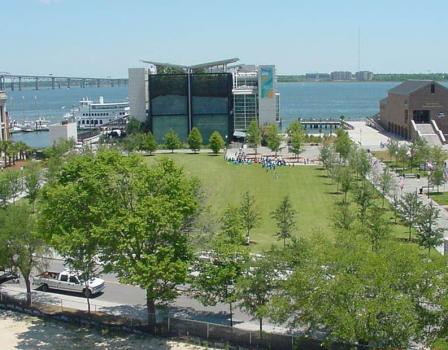 Calhoun Park AreaThe Calhoun Park Area site is located on the east side of the Charleston peninsula in Charleston, South Carolina. A manufactured gas plant (MGP) operated on site. The heating process used at the MGP to separate the flammable gas from coal or oil produced liquid coal tar waste. In 1991, EPA and state investigations found that MGP plant operations contaminated soil, sediment and groundwater. EPA, the South Carolina Department of Health and Environmental Control (SC DHEC) and the site’s potentially responsible party, South Carolina Electric & Gas (SCE&G), worked together to clean up the site. The stakeholders’ cleanup protected public health and the environment, while making redevelopment possible. Cleanup activities included removal of contaminated soil, groundwater treatment and sediment capping in the Cooper River. Non-aqueous phase liquid (NAPL) removal continues on the SCE&G substation property and groundwater monitoring is ongoing. Stakeholder cooperation resulted in the successful redevelopment of the site and the entire shoreline. Today, the site is home to a 1,100-space city parking garage, Charlotte Park and open green space for community events. The South Carolina Aquarium, commercial buildings, the Fort Sumter Visitor Education Center and ferry terminal are also located on site. SCE&G owns and operates an electrical substation at the site, which provides electricity to most of downtown Charleston. Future site uses currently under construction include a senior housing development, Gadsenboro Park and the International African American Museum.
Calhoun Park AreaThe Calhoun Park Area site is located on the east side of the Charleston peninsula in Charleston, South Carolina. A manufactured gas plant (MGP) operated on site. The heating process used at the MGP to separate the flammable gas from coal or oil produced liquid coal tar waste. In 1991, EPA and state investigations found that MGP plant operations contaminated soil, sediment and groundwater. EPA, the South Carolina Department of Health and Environmental Control (SC DHEC) and the site’s potentially responsible party, South Carolina Electric & Gas (SCE&G), worked together to clean up the site. The stakeholders’ cleanup protected public health and the environment, while making redevelopment possible. Cleanup activities included removal of contaminated soil, groundwater treatment and sediment capping in the Cooper River. Non-aqueous phase liquid (NAPL) removal continues on the SCE&G substation property and groundwater monitoring is ongoing. Stakeholder cooperation resulted in the successful redevelopment of the site and the entire shoreline. Today, the site is home to a 1,100-space city parking garage, Charlotte Park and open green space for community events. The South Carolina Aquarium, commercial buildings, the Fort Sumter Visitor Education Center and ferry terminal are also located on site. SCE&G owns and operates an electrical substation at the site, which provides electricity to most of downtown Charleston. Future site uses currently under construction include a senior housing development, Gadsenboro Park and the International African American Museum.
For more information:
- Reuse and the Benefit to Community: Calhoun Park Area Case Study (2014) (PDF) (17 pp, 1.8 MB, About PDF)
- News Release: EPA Announces the Excellence in Site Reuse Award at the Calhoun Park Area Site, Charleston County, South Carolina
- Superfund Site Profile Page
Carolawn, Inc.
The 60-acre Carolawn, Inc. Superfund site is located in Fort Lawn, South Carolina. Between 1970 and 1979, property owners operated a solvent waste storage facility and later, a waste storage, treatment and disposal facility at the site. The property owner abandoned the site in 1980. Leaking tanks, drums of hazardous waste and lagoons filled with sludge remained on the abandoned site. Investigations found that site activities contaminated soil and groundwater with hazardous chemicals. Between 1981 and 1982, EPA removed drums of hazardous waste and several tons of contaminated soil from the site. In 1983, EPA added the site to the Superfund program’s National Priorities List (NPL). Soil vapor extraction currently addresses remaining soil and groundwater contamination. In 1996, Circle S Ranch bought a portion of the site, as well as a nearby property, and built a large regional turkey feed mill. The mill supplies feed to area farmers. In the heart of South Carolina's turkey farm belt, turkey farming provides jobs and income to local residents.
For more information:
Geiger (C & M Oil)
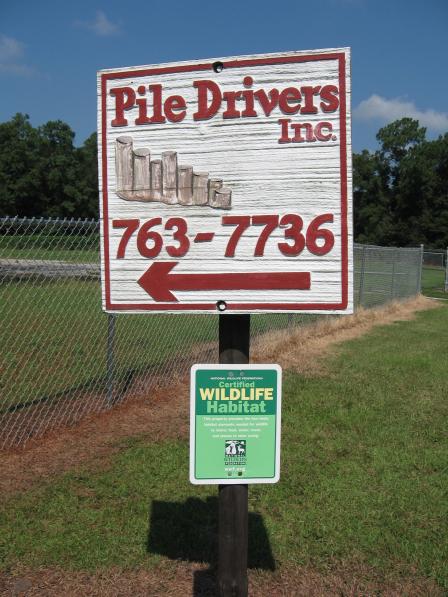 Geiger (C & M Oil)The 1.5-acre Geiger (C & M Oil) Superfund site is located in Hollywood, South Carolina, 10 miles west of Charleston. From 1969 to 1974, Adams Run Services, Inc. incinerated waste oil at the site and stored waste oil in eight unlined lagoons on the property. A 1980 EPA site investigation found that site operations resulted in the contamination of ground water and soil with volatile organic compounds (VOCs), lead and chromium. EPA placed the site on the National Priorities List (NPL) in 1984 and selected a final cleanup plan in a 1987 Record of Decision (ROD). Cleanup activities included the extraction and treatment of contaminated ground water and excavation and treatment of contaminated soil. EPA issued two amendments to the ROD, one in 1993 and one in 1998. The amendments removed on-site treatment of contaminated soil from site cleanup activities and changed the ground water cleanup strategy from extraction and treatment to monitored natural attenuation. EPA documented the completion of remedy construction in a 1998 preliminary closeout report. EPA’s cleanup plan allowed for the continued use of the site throughout cleanup activities. Since 1983, Pile Drivers, Inc., a construction subcontracting business, has used the site property as an equipment storage area.
Geiger (C & M Oil)The 1.5-acre Geiger (C & M Oil) Superfund site is located in Hollywood, South Carolina, 10 miles west of Charleston. From 1969 to 1974, Adams Run Services, Inc. incinerated waste oil at the site and stored waste oil in eight unlined lagoons on the property. A 1980 EPA site investigation found that site operations resulted in the contamination of ground water and soil with volatile organic compounds (VOCs), lead and chromium. EPA placed the site on the National Priorities List (NPL) in 1984 and selected a final cleanup plan in a 1987 Record of Decision (ROD). Cleanup activities included the extraction and treatment of contaminated ground water and excavation and treatment of contaminated soil. EPA issued two amendments to the ROD, one in 1993 and one in 1998. The amendments removed on-site treatment of contaminated soil from site cleanup activities and changed the ground water cleanup strategy from extraction and treatment to monitored natural attenuation. EPA documented the completion of remedy construction in a 1998 preliminary closeout report. EPA’s cleanup plan allowed for the continued use of the site throughout cleanup activities. Since 1983, Pile Drivers, Inc., a construction subcontracting business, has used the site property as an equipment storage area.
For more information:
Golden Strip Septic Tank Service
The Golden Strip Septic Tank Superfund site is located on a 55-acre parcel near Simpsonville, South Carolina. An industrial/septic waste hauling and disposal service operated on the site from 1960 to 1975. During that time, wastes discharged into five lagoons on site, contaminating surrounding soils. In 1987, EPA added the site to the Superfund program’s National Priorities List (NPL). EPA's remedy, selected in 1991, included excavating and stabilizing contaminated soil and sludge in an on-site landfill. In 1996, parties capped the landfill with clean soil and a vegetative cover. In 1998, EPA removed the site from the NPL. Currently, restrictions in place limit land and groundwater use within the area. The Golden Strip YMCA purchased this property in 2002 and began redeveloping the site as a multi-use recreational complex. Reuse includes preserving green space and the former family farm structures as an interactive environmental education center. Current redevelopment also includes YMCA soccer fields, nature trails and an amphitheater.
For more information:
Helena Chemical Co. Landfill
The 13.5-acre Helena Chemical Co. Landfill Superfund site is located in Fairfax, South Carolina. Several companies operated pesticide formulation facilities at the site between the mid-1960’s and 1978. The Helena Chemical Company operated at the site between 1971 and 1978. Illegal dumping of pesticide residues and other wastes in an unpermitted on-site landfill contaminated groundwater, soil and sediment. EPA and the South Carolina Department of Health and Environmental Control began investigating the site in 1985. Subsequently, EPA added the site to the Superfund program’s National Priorities List (NPL) in 1990. In 1993, cleanup activities began and workers removed contaminated soils and installed a groundwater treatment system. Groundwater treatment is ongoing. The Helena Chemical Company still owns the property and operates a retail sales outlet for agricultural fertilizers, herbicides, pesticides and seed at the site.
For more information:
Koppers Co., Inc. (Florence Plant)
The Koppers Co., Inc. (Florence Plant) Superfund site occupies 145 acres east of Florence, South Carolina. The Koppers Company operated a wood treatment and preserving facility at the site. Workers at the site disposed of process wastewater in unlined lagoons on site. In 1974, EPA ordered the company to control wastewater runoff after the Agency found that the company violated permit guidelines. The lagoons closed in 1979, but further investigations found contaminated groundwater and soil on site. EPA determined that the contamination posed a direct health threat to people using groundwater nearby. EPA added the site to the Superfund program’s National Priorities List (NPL) in 1984. The Koppers Company, with guidance from EPA and the South Carolina Department of Health and Environmental Control, placed a cap over an on-site landfill in the late 1980s. Treatment of contaminated soil and groundwater is ongoing. EPA removed the site from the NPL in September 2013. The Koppers Company continues to operate wood-treating and preserving facilities at the site.
For more information:
Lexington County Landfill Area
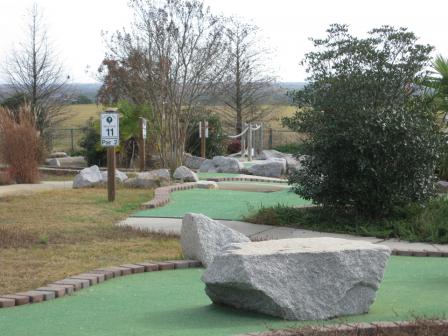 Lexington County LandfillFrom the 1940s until 1988, the 160-acre Lexington County Landfill Area Superfund site in Cayce, South Carolina accepted waste at multiple dumping areas. EPA and South Carolina Department of Health and Environmental Control (SCDHEC) found that disposal practices led to groundwater contamination at the site. EPA placed the site on the Superfund program’s National Priorities List (NPL) in 1989. Cleanup began in 1996. With future reuse opportunities in mind, Lexington County decided to lead and fund site cleanup activities. Lexington County worked with the on-site businesses, Par Tee Driving Range and Bray Park Road Ball Park, to plan cleanup activities that allowed the facilities to remain open during the cleanup. Site cleanup activities consisted of consolidating and capping waste, and regrading. Workers also installed a landfill gas collection system and a groundwater treatment system on site. Lexington County used green cleanup practices and local businesses when possible. Par Tee Driving Range used the landfill cover for a new tee box. Lexington County built a collection and recycling center on site. EPA and SCDHEC assisted Palmetto Falls Mini-Golf with the design of a new mini-golf course on site. EPA, SCDHEC, Richardson Smith Gardner and Associates, Inc. and Lexington County worked with the University of South Carolina to turn part of the site into a new golf practice facility for the university’s golf team. On-site businesses and the recycling center provide jobs and annual employment income to the local community. In May 2012, EPA Region 4 gave Lexington County the Region 4 “Excellence in Site Reuse” award for the County’s extraordinary efforts to build partnerships with local businesses, explore green cleanup options and conduct cleanup in a way that allows for the safe and appropriate reuse of this site.
Lexington County LandfillFrom the 1940s until 1988, the 160-acre Lexington County Landfill Area Superfund site in Cayce, South Carolina accepted waste at multiple dumping areas. EPA and South Carolina Department of Health and Environmental Control (SCDHEC) found that disposal practices led to groundwater contamination at the site. EPA placed the site on the Superfund program’s National Priorities List (NPL) in 1989. Cleanup began in 1996. With future reuse opportunities in mind, Lexington County decided to lead and fund site cleanup activities. Lexington County worked with the on-site businesses, Par Tee Driving Range and Bray Park Road Ball Park, to plan cleanup activities that allowed the facilities to remain open during the cleanup. Site cleanup activities consisted of consolidating and capping waste, and regrading. Workers also installed a landfill gas collection system and a groundwater treatment system on site. Lexington County used green cleanup practices and local businesses when possible. Par Tee Driving Range used the landfill cover for a new tee box. Lexington County built a collection and recycling center on site. EPA and SCDHEC assisted Palmetto Falls Mini-Golf with the design of a new mini-golf course on site. EPA, SCDHEC, Richardson Smith Gardner and Associates, Inc. and Lexington County worked with the University of South Carolina to turn part of the site into a new golf practice facility for the university’s golf team. On-site businesses and the recycling center provide jobs and annual employment income to the local community. In May 2012, EPA Region 4 gave Lexington County the Region 4 “Excellence in Site Reuse” award for the County’s extraordinary efforts to build partnerships with local businesses, explore green cleanup options and conduct cleanup in a way that allows for the safe and appropriate reuse of this site.
For more information:
- Reuse and the Benefit to Community: Lexington County Landfill Case Study (2014) (PDF) (8 pp, 784 K, About PDF)
- Video: Lexington County Landfill Area: West Columbia’s Recreational Gem Exit
- Superfund Site Profile Page
Macalloy Corporation
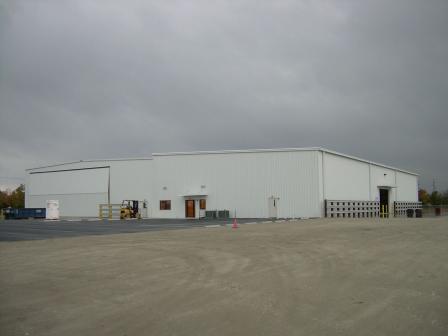 Macalloy CorporationThe Macalloy Corporation Superfund site occupies 125 acres in North Charleston, South Carolina. From 1941 until 1998, ferrochrome alloy was produced on the site. Operations led to groundwater, soil and sediment contamination. EPA added the site to the Superfund program’s National Priorities List (NPL) in 2000. Cleanup activities included soil mixing, and groundwater treatment and monitoring. Cleanup also involved sediment removal, tidal creek restoration and storm water management. EPA and the South Carolina Department of Health and Environmental Control (SCDHEC) worked with the potentially responsible party (PRP) and a local developer to plan for an industrial park on the site. The developer relocated three businesses onto the site property. A paper stock recycler, a liquid sea container business and a container tank cleaning business are the first tenants of the industrial park. These businesses employ 60 people full time, and provide over $2.5 million in annual employment income to the community. In 2012, the paper stock recycling company finished an expansion of their facility on the site. This increased the company’s recycling handling capacity by 1.5 tons each month. EPA will continue to work with interested purchasers, tenants and developers to ensure the continued safe reuse of the site.
Macalloy CorporationThe Macalloy Corporation Superfund site occupies 125 acres in North Charleston, South Carolina. From 1941 until 1998, ferrochrome alloy was produced on the site. Operations led to groundwater, soil and sediment contamination. EPA added the site to the Superfund program’s National Priorities List (NPL) in 2000. Cleanup activities included soil mixing, and groundwater treatment and monitoring. Cleanup also involved sediment removal, tidal creek restoration and storm water management. EPA and the South Carolina Department of Health and Environmental Control (SCDHEC) worked with the potentially responsible party (PRP) and a local developer to plan for an industrial park on the site. The developer relocated three businesses onto the site property. A paper stock recycler, a liquid sea container business and a container tank cleaning business are the first tenants of the industrial park. These businesses employ 60 people full time, and provide over $2.5 million in annual employment income to the community. In 2012, the paper stock recycling company finished an expansion of their facility on the site. This increased the company’s recycling handling capacity by 1.5 tons each month. EPA will continue to work with interested purchasers, tenants and developers to ensure the continued safe reuse of the site.
For more information:
- Reuse and the Benefit to Community: Macalloy Corporation Case Study (2012) (PDF) (9 pp, 389 K, About PDF)
- Superfund Site Profile Page
Palmetto Wood Preserving
The 5-acre Palmetto Wood Preserving Superfund site is in Dixiana, South Carolina. Wood preserving operations lasted from 1963 to 1985. During this time, wood-treating solution chemicals spilled, leading to soil and groundwater contamination. EPA listed the site on the Superfund program’s National Priorities List (NPL) in 1984. In 1986, EPA found contamination in surface water, sediments, soil and groundwater on site and in the surrounding area. EPA began cleanup work in 1988. Activities included cleaning up soil, installing a groundwater extraction and treatment system, and connecting a sewer line to the City of Cayce wastewater treatment plant. EPA also removed the original wood-preserving facility from the property. Groundwater cleanup is complete and EPA has removed the groundwater treatment building and associated piping. The South Carolina Department of Health and Environmental Control continues groundwater monitoring. Currently, South Carolina Electric and Gas owns the northern portion of the site, which they use for equipment storage. Other portions of the site remain undeveloped. EPA will provide information to prospective purchasers and stakeholder interested in reusing these areas.
For more information:
Para-Chem Southern, Inc.
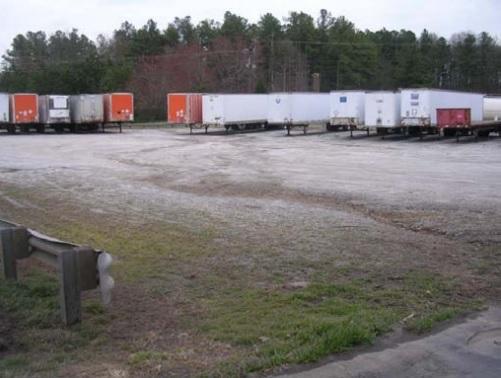 Para-Chem Southern, Inc.The 134-acre Para-Chem Southern, Inc. Superfund site is located in Simpsonville, South Carolina. Para-Chem Southern, Inc. (now Royal Adhesives & Sealants), has operated on site since 1965. The company produces acrylic polymers, thickeners, latex coatings and adhesives for consumer and industrial applications. In 1985, the company notified EPA and the South Carolina Department of Health and Environmental Control (SCDHEC) about areas where industrial plant waste burial occurred between 1975 and 1979. Operators also discharged wastewater into two unlined ponds on site. Disposal practices and two 3,000-gallon spills led to the contamination of surface water, soil, sludge and groundwater. EPA added the site to the Superfund program’s National Priorities List (NPL) in 1990. Cleanup included removing contaminated soil, drums and waste. Additional activities included treating contaminated soil and groundwater. Following cleanup, EPA deleted parts of the site from the NPL in 1997. The manufacturing facility continues to operate on site. By treating and monitoring groundwater, placing use restrictions on the site property, EPA, SCDHEC and the site’s potentially responsible party continue to protect people and the environment from site contamination.
Para-Chem Southern, Inc.The 134-acre Para-Chem Southern, Inc. Superfund site is located in Simpsonville, South Carolina. Para-Chem Southern, Inc. (now Royal Adhesives & Sealants), has operated on site since 1965. The company produces acrylic polymers, thickeners, latex coatings and adhesives for consumer and industrial applications. In 1985, the company notified EPA and the South Carolina Department of Health and Environmental Control (SCDHEC) about areas where industrial plant waste burial occurred between 1975 and 1979. Operators also discharged wastewater into two unlined ponds on site. Disposal practices and two 3,000-gallon spills led to the contamination of surface water, soil, sludge and groundwater. EPA added the site to the Superfund program’s National Priorities List (NPL) in 1990. Cleanup included removing contaminated soil, drums and waste. Additional activities included treating contaminated soil and groundwater. Following cleanup, EPA deleted parts of the site from the NPL in 1997. The manufacturing facility continues to operate on site. By treating and monitoring groundwater, placing use restrictions on the site property, EPA, SCDHEC and the site’s potentially responsible party continue to protect people and the environment from site contamination.
For more information:
Sangamo Weston, Inc/Twelve-Mile Creek/Lake Hartwell PCB Contamination
The Sangamo Weston, Inc./Twelve-Mile Creek/Lake Hartwell Polychlorinated Biphenyls (PCB) Contamination Superfund site is located in Pickens, South Carolina. The 224-acre site includes the location of a former manufacturing plant, six waste disposal areas, and a portion of Twelve-Mile Creek and Lake Hartwell. Sangamo Weston, Inc. owned and operated a capacitor manufacturing plant on site from 1955 to 1987. Waste handling practices resulted in contamination on site. EPA added the site to the Superfund program’s National Priorities List (NPL) in 1990. Cleanup activities included removal and treatment of soil and groundwater; groundwater, fish tissue and sediment monitoring; fish consumption guidelines; and a fish advisory public education and awareness program. Fish advisories remain in effect for fish caught from Lake Hartwell and Twelve-Mile Creek. After completing cleanup activities, EPA deleted portions of the site from the NPL. In a merger, Sangamo Weston, Inc. became Schlumberger Technology Corporation, and donated part of the property to the City of Pickens in 1999. The City of Pickens redeveloped the area into a public recreation complex.
For more information:
Savannah River Site (USDOE)
The Savannah River (USDOE) Superfund site includes about 310 square miles of land along the Savannah River near Aiken, South Carolina. Originally constructed in the early 1950s, the site served as a nuclear weapons fabrication plant. The main buildings at the site contained reactors, chemical separation plants and waste management facilities. In 1981, the United States Department of Energy (USDOE) identified contamination on site. Studies revealed contaminated ground water, surface water, soils and former disposal areas. In 1988, nuclear materials production at the site ended. In November 1989, EPA added the site to the Superfund program’s National Priorities List (NPL). USDOE, with EPA and South Carolina as regulators, leads site investigations and cleanup activities. To date, USDOE has treated billions of gallons of ground water and removed over one million pounds of contaminants. USDOE contracts Savannah River Nuclear Solutions, LLC to manage the site. Savannah River Nuclear Solutions, LLC employs about 10,000 workers at the site. The Savannah River (USDOE) site is the first site in the nation to completely close nuclear weapons materials production reactors under the Comprehensive Environmental Response, Compensation, and Liability Act (CERCLA). Additional remedial efforts continue at the site. The United States Department of Agriculture Forest Service manages about 90 percent of site property. This largely forested area also includes pine plantations. Industrial developments occupy the remaining 10 percent of the land. In 2008, Ameresco, Inc. developed a 20-megawatt biomass project at the site. The project provides steam and helps power general on-site operations. Site stakeholders are actively seeking to use site properties as they become available. The United States Department of Defense uses closed reactor areas and an area near the Savannah River for training. The Department of Homeland Security has used a former industrial area for research. Future options for reuse may include a solar farm.
For more information:
Townsend Saw Chain Co.
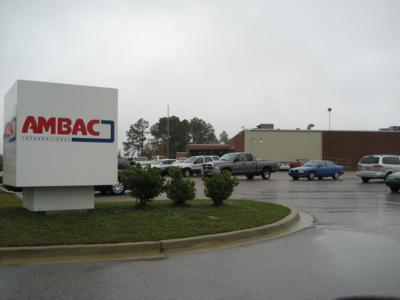 Townsend Saw Chain Co.The 50-acre Townsend Saw Chain Co. Superfund site is located near Pontiac, South Carolina. Starting in 1971, Textron Inc. began using the facility for manufacturing saw chain parts. From 1964 until 1981, operations discharged wastewater onto the ground in a low-lying area next to the facility. Improper waste disposal caused groundwater and soil contamination. EPA placed the site on the Superfund program’s National Priorities List (NPL) in 1990. EPA’s cleanup removed and disposed of contaminated soil and treated soil and groundwater. Groundwater monitoring continues. The successful cleanup of the site allowed for redevelopment of the property. Of the original 50 acres, 35.5 acres of the site have been sold for commercial development. Centerline Development, LLC retains ownership of the remaining 14.5 acres. Currently, AMBAC International (formerly American Bosch), a manufacturer and supplier of fuel injection equipment, operates at the former Townsend manufacturing facility. In 2010, site reuses included a veterinary hospital, a kennel, a hotel, an auto-body shop. Additional site uses include a professional and industrial park, two retail stores, a gas station and restaurants.
Townsend Saw Chain Co.The 50-acre Townsend Saw Chain Co. Superfund site is located near Pontiac, South Carolina. Starting in 1971, Textron Inc. began using the facility for manufacturing saw chain parts. From 1964 until 1981, operations discharged wastewater onto the ground in a low-lying area next to the facility. Improper waste disposal caused groundwater and soil contamination. EPA placed the site on the Superfund program’s National Priorities List (NPL) in 1990. EPA’s cleanup removed and disposed of contaminated soil and treated soil and groundwater. Groundwater monitoring continues. The successful cleanup of the site allowed for redevelopment of the property. Of the original 50 acres, 35.5 acres of the site have been sold for commercial development. Centerline Development, LLC retains ownership of the remaining 14.5 acres. Currently, AMBAC International (formerly American Bosch), a manufacturer and supplier of fuel injection equipment, operates at the former Townsend manufacturing facility. In 2010, site reuses included a veterinary hospital, a kennel, a hotel, an auto-body shop. Additional site uses include a professional and industrial park, two retail stores, a gas station and restaurants.
For more information:
